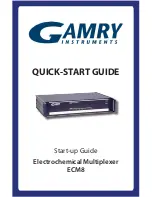
Raisecom
RC3000-15 (P100R001) Hardware Description
5 SDH cards
Raisecom Proprietary and Confidential
Copyright © Raisecom Technology Co., Ltd.
37
5.1 STM1 (B)
5.1.1 Functions and appearance
Panel
Function
The STM1 card is a Synchronous Digital Hierarchy (SDH) aggregation
card. It is connected to the SDH transmission network. It provides the
following functions:
Provide 2 STM1 optical interfaces which are SFP optical module
interfaces.
Provide 1 DB37 interface to transmit 4 ways of transparent E1
services.
Support balanced or unbalanced E1 interface. The default
configuration is unbalanced E1 interface.
Provide 4 Ethernet Over SDH (EOS) interfaces which are 10/100
Mbit/s auto-negotiation electrical interface.
Support isolating or switching 4 EOS interfaces. In switching mode, 4
EOS interfaces can be connected to the switching card through the
backplane.
The EOS interface supports Generic Framing Procedure (GFP)
encapsulation, supports Link Capacity Adjustment Scheme (LCAS),
supports VC12 mapping, and does not support VC3/VC4 mapping.
The EOS timeslot is fixed to occupy No.1–47 VC12 of VC4-3.
The EOS interface supports rich Ethernet features, such as VLAN,
QinQ, link aggregation, flow control, storm control, Quality of Service
(QoS), rate limiting, MAC address learning, loop detection, Layer 2
protocol transparent transmission, and Access Control List (ACL).
Support cross connection of 32 ways of 64K E1 services. The E1 can
be configured to protection or independent mode. In protection mode,
there are 32 ways of E1 services. In independent mode, there are 64
ways of E1 services which can be transmitted uplink to any optical
interface.
Support STM1 inter-card protection, and support chain, star, ring, or
hybrid networking topology.
Support intra-card or inter-card SDH optical interface protection.
Support Low-order Path (LP) protection and Multiplexing Section
(MS) protection.
Support Sa bit and 64K network management.
Support 1 way of Bit Error Rate (BER) signals which can be cross
connected to the backplane or an optical interface.
Support remote power failure alarm.
Support Automatic Laser Shutdown (ALS) and Digital Diagnosis
Monitoring (DDM).
The clock supports protection, locking, and free oscillation working
modes, and SSM clock synchronization information.
Support clock sources of local crystal, SDH line clock (4 lines), and
system clock signals from the DXC card.
Provide 1 way of 2 Mbit/s clock signals to the backplane and the DXC
card as a slave for system clock. The system clock can choose any E1
of 32 ways of E1 signals or 4 ways of sampled clock signals of the
aggregation card.
Be exclusive with the STM1 (A).
















































